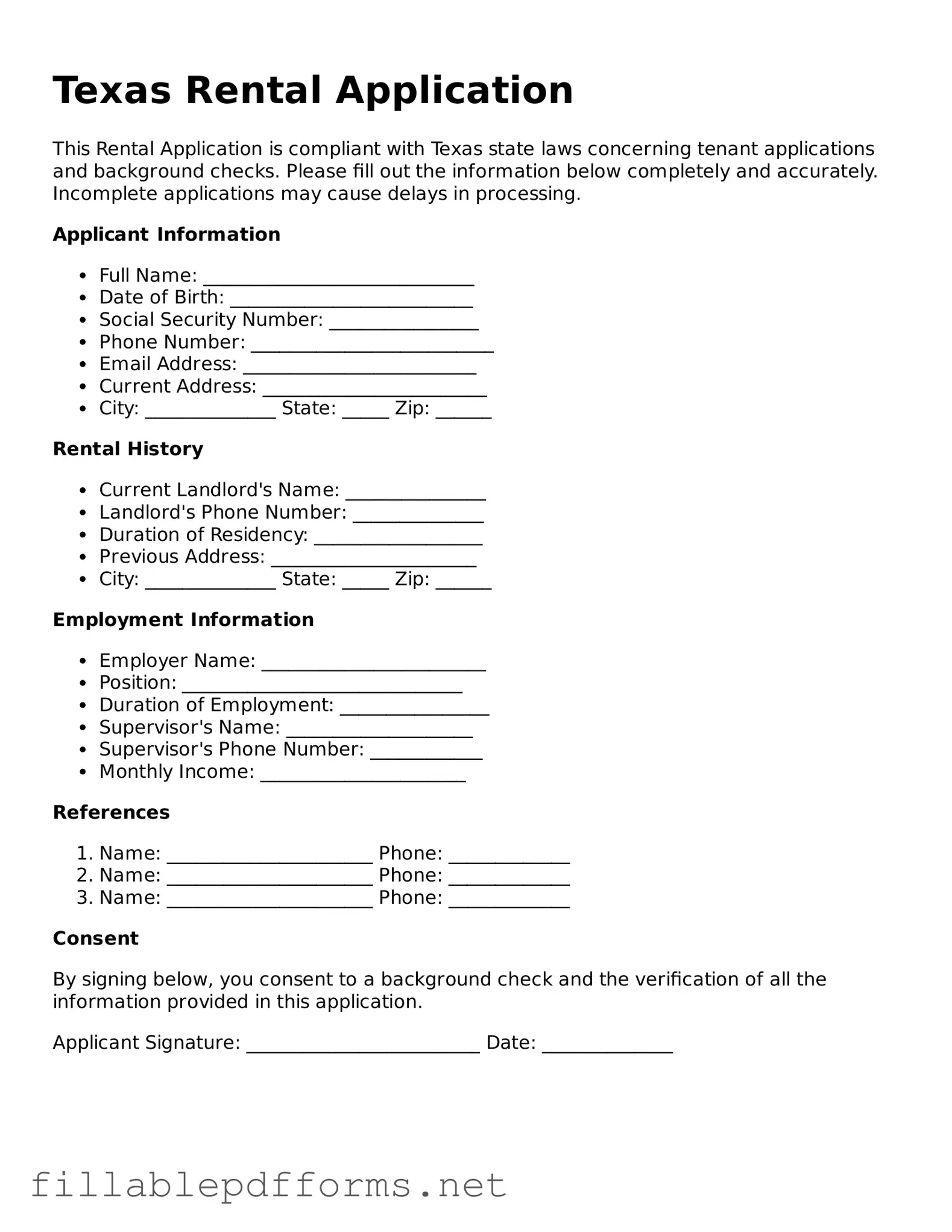Attorney-Verified Rental Application Form for Texas State
The Texas Rental Application form is a document used by landlords to collect essential information from potential tenants. This form helps property owners assess the suitability of applicants based on their rental history, creditworthiness, and personal background. Completing this application is a crucial step in the rental process, ensuring that both parties have a clear understanding of expectations.
Launch Editor Here
